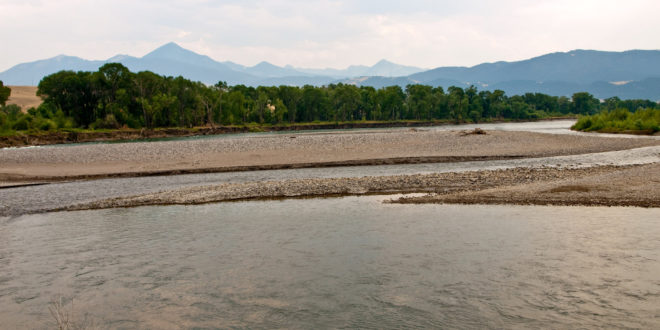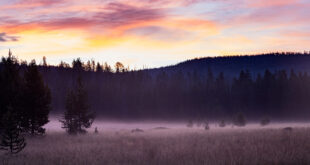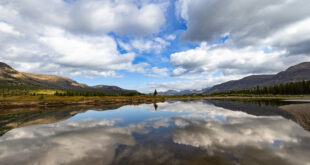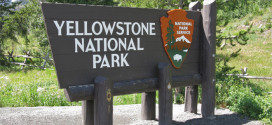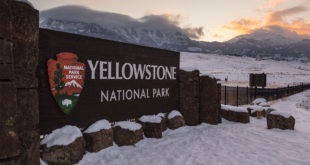The Montana Fish, Wildlife and Parks is preparing a plan for future fish kills in the Yellowstone River, after last summer’s disastrous season.
Mid-August, we reported FWP officials were predicting no major fish kill for 2017, owing to high flows and cooler waters after a heavy winter. The news was likely welcome to anglers and outfitters, who lost time and money while portions of the Yellowstone River were closed last summer, following the deaths of thousands of whitefish.
According to the Bozeman Daily Chronicle, some outfitters haven’t forgotten the impact of river closure, something the FWP says they’re taking to heart as they craft a response plan:
After it became apparent that a microscopic parasite that causes proliferative kidney disease was what killed the fish in the Yellowstone River, state officials banned all recreation on 183 miles of the river and on every tributary that dumped into that stretch. It was an unprecedented move, but the decision-makers figured easing any source of stress might help fish survive.
[Montana Fish and Wildlife Commission Chair Dan] Vermillion was one of the people who helped make the decision, and he thinks it did some good. The majority of the kill was concentrated in one section of the river, and he thinks keeping people off the river for a while prevented the same density of fish deaths from creeping downstream.
But John Bailey, the owner of Dan Bailey’s Fly Shop, has quibbles with that closure. He thinks it was too heavy-handed.
“They got so scared they overdid what they should have,” Bailey said.
Like other shops in the area, Bailey cancelled fishing trips he’d sold to clients. He lost a bunch of business, and even after the river reopened, people weren’t coming to him for a fishing trip. He said it wiped out three months of business.
“That was really devastating,” he said. “And then we went into a hard winter.”
Early this year, Bailey was fielding calls from anglers who wondered if they’d be able to fish in August. He couldn’t give an answer beyond optimism about the snowpack. He didn’t know what the state might do if the kill happened again.
Vermillion said Montana Fish, Wildlife and Parks has started drafting a sort of response plan for outbreaks like this, something that will safeguard the river and offer certainty to people like John Bailey.
“The idea of course is to minimize the impact on the public while maximizing the protection of the resource,” he said. “We know these events will occur again.”
According to the Chronicle, no details have been finalized; Vermillion acknowledged disease outbreaks are tougher for the FWP to handle than low river flows, which also detrimentally affect fish populations.
Impetus for the Yellowstone River plan has come, in part, from a symposium held earlier this spring in Livingston. At said symposium, old grievances between anglers and agriculturalists were on full display, since each view the river as a particular resource. However, according to the Chronicle, the meeting got the ball rolling on plans to better address the river’s future:
In the months since[the symposium], a skeleton for that group has started to form, which they’re calling the Upper Yellowstone River Partnership. Wendy Weaver, the executive director of Montana Aquatic Resources Service, has been planning the meetings that have taken place since. There have been four, and she said between 15 and 25 people have attended the meetings.
It’s still in its infancy, but the idea is that the group will address threats the river faces. Not just the potential for fish to die or river flows to get low, but also development in the Paradise Valley and whatever else may come. Some who go to the meetings want to see more conservation projects happen on the river. Others would rather see nothing change and don’t feel the river is facing serious threats.
To her, the key to success is getting all sides of the conversation to show up.
“It’s just really critical to have the proper stakeholder buy-in so that nobody feels like they’re left behind,” Weaver said.
But agricultural water users are suspicious of the group’s motives. During the fish kill, some muttered that if ranchers weren’t pulling so much water out of the river the fish kill wouldn’t have happened. State biologists disputed that, saying that even if irrigation was shut off the kill would have likely still happened.
But the state’s dismissal of the claim didn’t erase it. Many ranchers were still disgusted by the implication that they are to blame, and some believe that all this new watershed group wants to do is try to take their water.
Pat Byroth of Trout Unlimited told the Chronicle he’s optimistic the Upper Yellowstone River Partnership is a stepping stone to other projects that will ensure water stays in the tributary system—a goal that doesn’t mean cutting out agriculture. Indeed, last week, Byroth and Trout Unlimited celebrated the acquisition of water rights on 549 acres of former mining land.
All in all, Byroth says, the meetings show people care about the fate of the river and hope to avoid disasters like last summer’s fish kill—or worse.
 Yellowstone Insider Your Complete Guide to America's First National Park
Yellowstone Insider Your Complete Guide to America's First National Park
